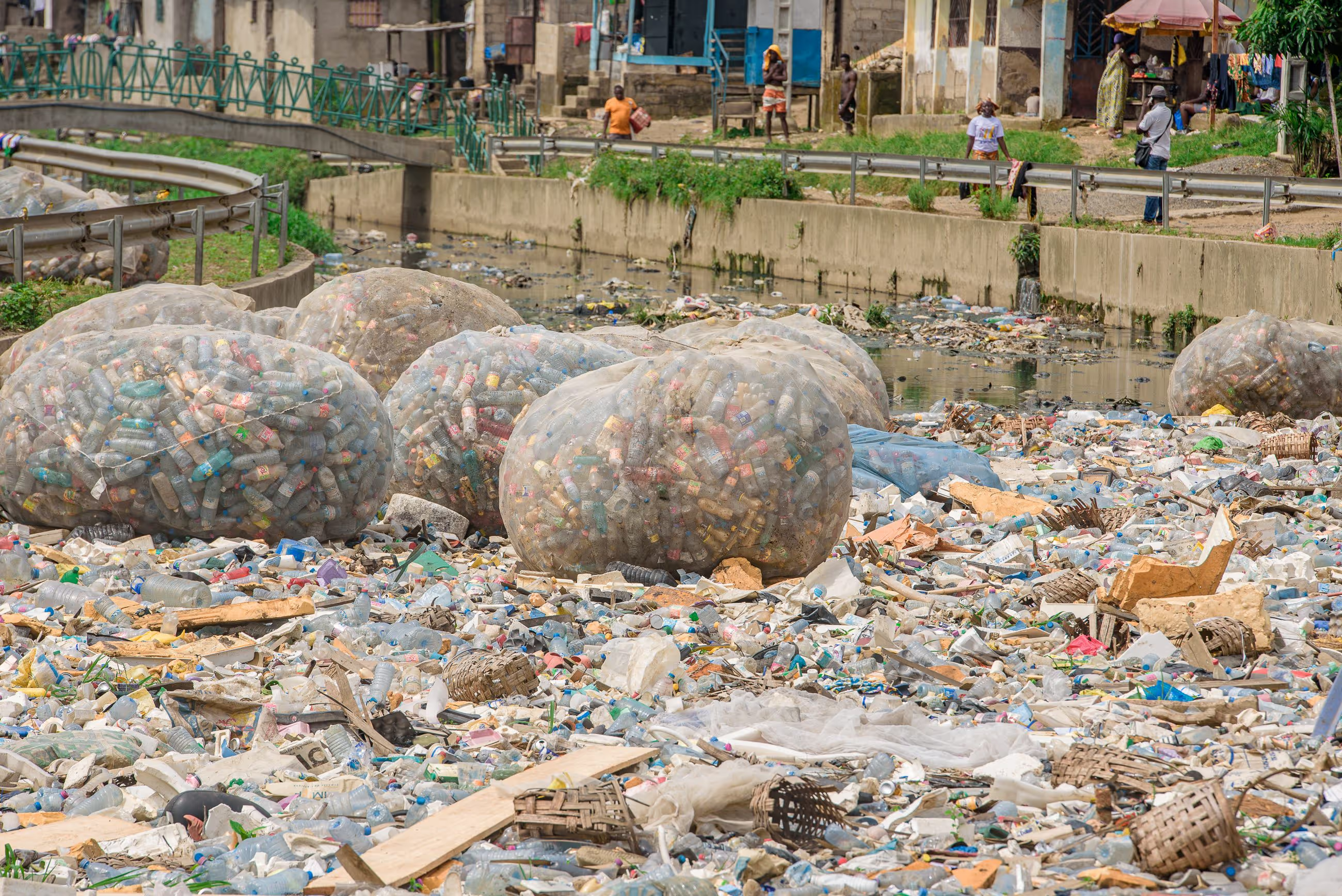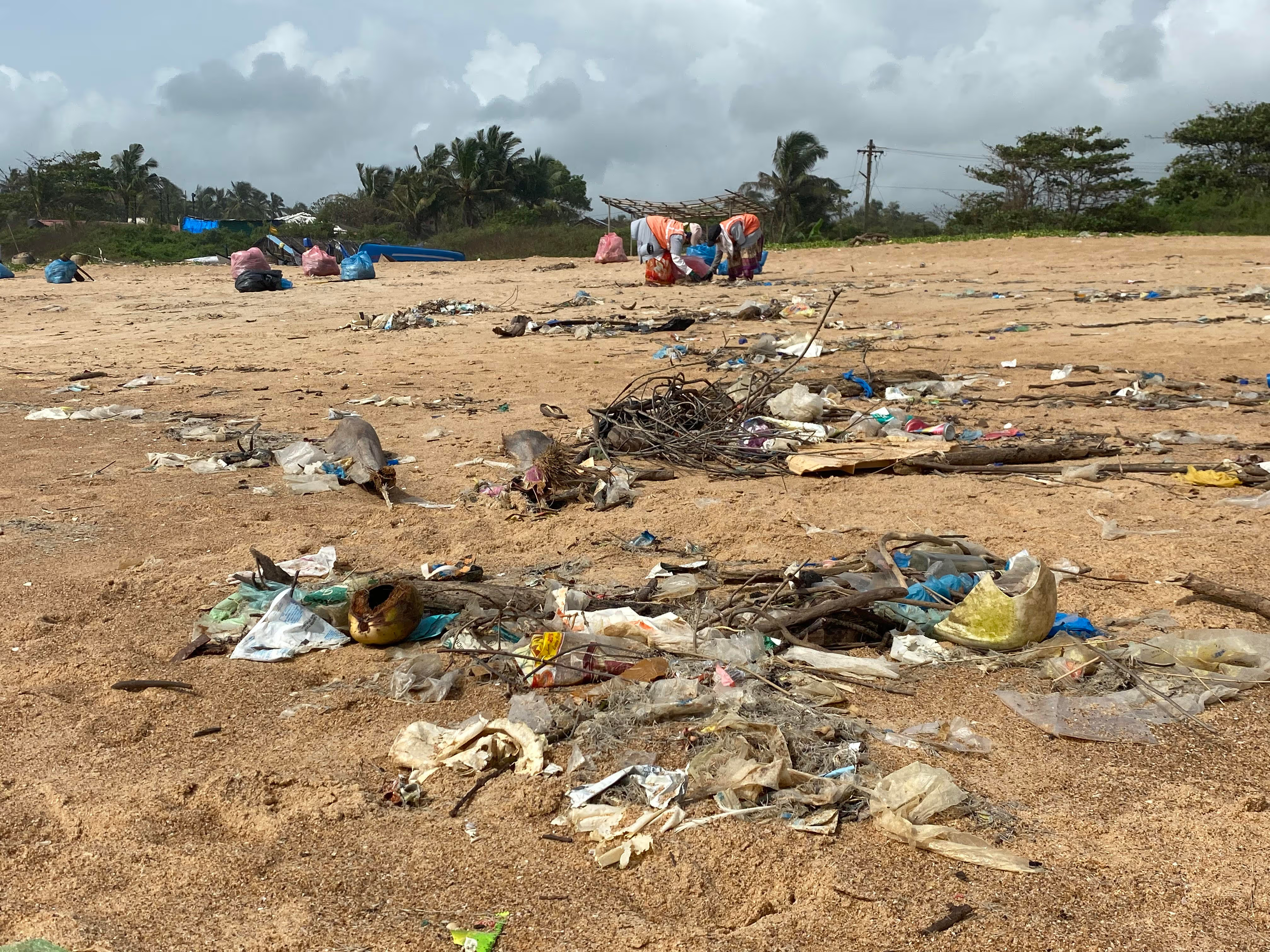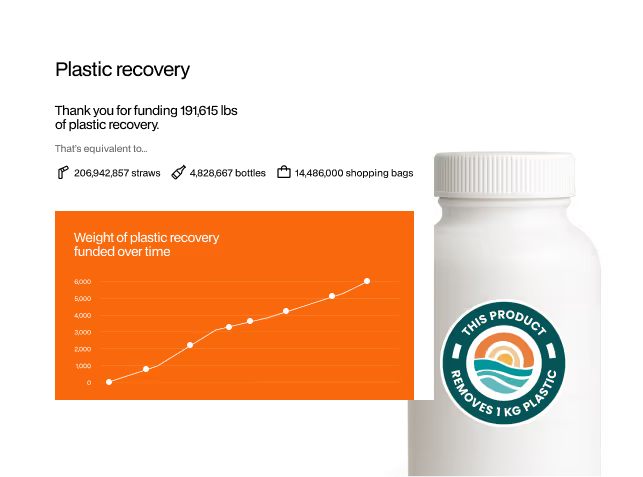The Scale of the Problem
The plastic pollution crisis is a pressing global challenge that demands immediate attention and decisive action.
With 11 million metric tons of plastic waste entering our oceans each year, and even more polluting land-based ecosystems, the scale of the problem is hard to comprehend. From plastic-choked waterways and threats to human health, to visceral images of marine animals entangled in debris, the impact is visible, profound and far-reaching.
At the heart of the issue is the ongoing production and use of single-use plastics, and the lack of effective waste management infrastructure.
Rapid urbanization, development, and changing consumption patterns continue to drive plastic production. The affordability, utility, and versatility of plastic – along with a persisting culture of disposability that prioritizes convenience over sustainability - means that record amounts of plastic are being manufactured and wasted. It's important to note that plastic is a byproduct of the petrochemical industry, underscoring its complex origins and its intertwined relationship with fossil fuel extraction and refinement.
Collection and recycling infrastructure is nowhere near keeping up with the capacity required. There are approximately 2 billion people globally who live without waste collection services. Broken waste value chains around the world - often lacking investment due to the low financial value assigned to various plastics - mean that plastic waste is far too often not collected, mismanaged, and ending up in the natural environment. Reports indicate that there is a $40 billion funding gap between now and 2040 for waste infrastructure globally.
As you continue reading, you will see how solving the plastic pollution crisis requires a multifaceted approach; an approach that encompasses reduction strategies, enhanced waste management infrastructure, and international cooperation.
By promoting reduction strategies, alternatives to single-use plastics, and embracing circular economy principles, we can reduce plastic consumption at the source. Simultaneously, investment in recycling and recovery infrastructure is essential to ensure that plastic waste - past, present, and future - is managed responsibly and efficiently.
The Drivers and Complexities of Plastic Pollution
Understanding the root causes of the plastic pollution crisis is essential to developing effective solutions.
Part of the challenge in solving the crisis is that it is not caused by a single factor. Instead, it’s driven by a combination of issues spanning the entire plastic value chain. From production and consumption to disposal and waste management – issues at each stage contribute to the proliferation of plastic waste in the natural environment.
At one end, a primary driver of the crisis is the widespread, ongoing, and rising use of plastics - particularly single-use plastics. Global plastic production, despite increasing awareness of the issue, is expected to quadruple by 2050. Plastics are incredible materials - used in combination to be simultaneously flexible, air tight, and durable. Many aspects of modern society can be attributed to the positive solutions plastic has brought to humanity as a material.
But its strengths are part of the challenge. The fusion of different plastic polymers can make materials difficult to recycle, and plastics’ durability - some estimates suggesting it can take up to 1,000 years for some plastics to decompose - mean that the plastic waste we generate today will remain as a pollutant for many generations to come.
On top of this, much plastic packaging today is still designed for just one use, and without consideration for reuse or recycling. Plastic bags, beverage bottles and other product packaging account for a significant portion of plastic waste worldwide. Inadequate waste management infrastructure also plays a significant role in the plastic pollution crisis. Nearly all countries lack the resources and capacity to properly collect, sort, and recycle or appropriately dispose of plastic waste - even at the current rate of use.
These broken systems lead to widespread littering and pollution as well as issues with waste being exported and imported rather than dealt with at the source. Plastics were designed and scaled before there were any systems in place to properly manage their end of life responsibly.
In developing countries the problem can appear more stark. In some countries as much as 90% of plastic waste is ‘mismanaged’ which means it’s uncollected or inadequately disposed of. Lack of collection infrastructure, in particular, means that household waste - including plastics - is often burned or dumped into the environment. This, along with the forces of wind and rain, leads to accumulation in oceans and natural habitats, posing a significant threat to marine life and other ecosystems.
Impact on the environment

Plastic debris contaminates the environment, posing a significant threat to life on land and in the oceans. From clogging the stomachs of marine animals, to impacts on air pollution and chemical contamination; the effects of plastic pollution are everywhere.
Marine ecosystems are perhaps most associated with plastic pollution. Plastic debris is rapidly accumulating in oceans, meaning that plastic from all over the world is being washed up in coastal areas, including shores of remote islands. As ocean plastic fragments into microplastics, it infiltrates food chains, posing additional risks to marine life and entering the human food chain.
Heartbreaking footage of a sea turtle’s nose blocked by a plastic straw became emblematic of plastic pollution’s impact on marine life. Approximately one million marine animals are killed from marine plastic pollution every year, primarily from ingestion and suffocation - including by entanglement in ‘ghost’ (discarded) plastic fishing nets.
The Great Pacific Garbage Patch, a massive accumulation of plastic debris in the Pacific Ocean, also serves as a stark reminder of the scale of the problem. Plastic pollution in oceans has been shown to disrupt marine ecosystem functions, altering nutrient cycles and biodiversity.
But while the ocean fills up with plastic, there is three times as much plastic waste leaking into land-based ecosystems. Around the world, plastic is filling vulnerable natural habitats in forests and wetlands, as well as causing health risks in urban spaces and to communities living close to and working in unregulated dumpsites and landfills.
Improper disposal practices, such as open burning of plastic waste, also release toxic pollutants and greenhouse gasses into the atmosphere, exacerbating air quality issues and contributing to global warming. These toxins also pose a threat to human health.
Impact on humans and community
Plastic pollution exacts a heavy toll on human health and well-being.
The waste management industry in parts of the Global South is often exploitative. Waste pickers - who are typically marginalized and economically disadvantaged individuals - bear the burden of managing plastic waste. They do this while facing stigma, working in hazardous conditions, and receiving inadequate compensation for their work. Some waste pickers in the informal sector are earning less than $1 per day, and there is evidence that a gender pay gap exists in the sector with women earning less than men.
Waste pickers often work in dangerous and unhealthy conditions, especially those working on illegal or poorly-managed waste dump sites which can be affected by landslides and explosions. Those living near waste dumps are at higher risk of injuries, respiratory diseases, and skin conditions, and the life expectancy of inhabitants of the Deonar landfill site in Mumbai, India, is just 39.

While the health risks associated with plastic pollution falls most obviously on those in the Global South living in and around waste, there is no escape from plastic wherever in the world you live.
Another example of how plastics disproportionately affect people of color and in lower socio-economic groups is the story of those living in so-called ‘Cancer Alley’ in the United States. Cancer Alley is an 85 mile stretch of road that runs along the Mississippi River from New Orleans to Baton Rouge. Approximately 200 fossil fuel and petrochemical plants are within this radius, and cancer rates in the area are unusually high. Forty percent of the residents in cancer alley are Black (compared to a twelve percent Black population in the US nationwide).
Microplastics are everywhere from the deepest oceans to the highest mountains, and have been found to be present in human blood and breast milk. By some estimations, the average human being consumes up to a credit card’s worth of plastic every week, and recent research has found microplastics and nano plastics (fragments of microplastics) in alarming quantities in bottled water.
There are also concerns about plastic toxicity, with chemicals leaching from plastic products contaminating air, water, and soil, with potential implications for human health. This is - again - particularly the case for communities located near poorly managed or informal waste disposal sites. Toxic leachate and landfill fires put people at risk from air and water pollution, with potentially significant long-term health consequences. In areas where there’s limited collection of household waste, waste is often burned, which contributes further to poor air quality and risk of respiratory issues.
As we confront the human impact of plastic pollution, we must recognize the interconnectedness of environmental and social justice issues. As we look to address the root causes of plastic pollution, we need to take a holistic approach. One that considers both the environmental damage being caused, but also the well-being of all individuals, particularly those most exposed to the adverse effects of our waste.
Read on :
Explore the solutions for plastic pollution crisis in our blog : Solving Plastic Pollution Crisis


.avif)








